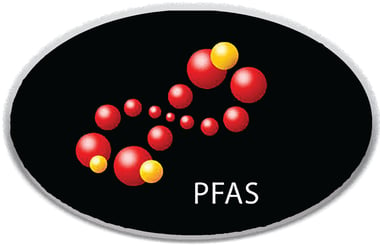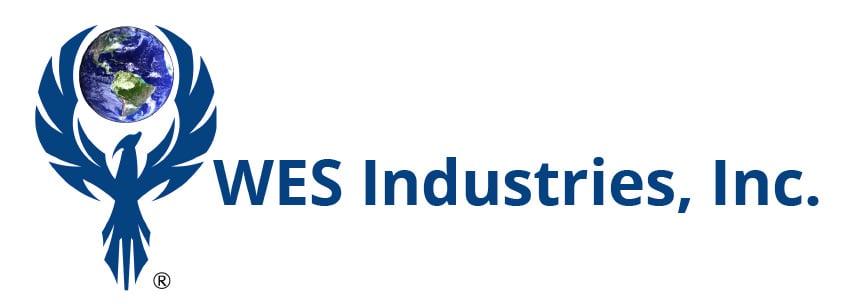 PFAS and PFOA, commonly known as "the forever chemicals," include perfluorooctanoic acid (PFOA) and perfluorooctane sulfonic acid (PFOS). Their use has been banned in the U.S. and other countries because of the health risks and long-term health impacts.
PFAS and PFOA, commonly known as "the forever chemicals," include perfluorooctanoic acid (PFOA) and perfluorooctane sulfonic acid (PFOS). Their use has been banned in the U.S. and other countries because of the health risks and long-term health impacts.
These chemicals have been used for many years to produce various items. They are found in non-stick cookware, food packaging, stain repellents, and many other products in America and abroad. Their long-lasting nature makes them an ideal choice for manufacturers. These chemicals have been studied and have been found to cause health issues.
Knowing the sources, making conscious decisions about products, limiting processed and packaged foods, and opting for safer alternatives is essential. You can protect yourself and your family from potential harm through these steps.
PFAS and PFOS are classes of chemicals used in many ways. They are used in nonstick cookware, stain repellents, and food packaging.
There are two main types of PFAS:
- Traditional PFAS
- Next-generation PFAS (also known as 'long-chain' PFAS).
Next-generation PFAS
Have been identified as contaminants in drinking water and other consumer products. Examples of these are perfluorohexane sulfonic acid (PFHxS), perfluorooctanoic acid (PFHpA), and perfluorononanoic acid (PFNA). Unfortunately, next-generation PFAS are not regulated by the United States Environmental Protection Agency (EPA).
One primary type of PFOA:
PFOA has been detected in a variety of sources. These include industrial waste, stain-resistant carpets, carpet-cleaning liquids, house dust, microwave popcorn bags, water, food, and Teflon (PTFE) products.
The most common PFOA:
The most common types are PFOA (perfluorooctanoic acid) and PFOS (perfluorooctanoic sulfonic acid).
Established groundwater standards for PFOA and PFOS are:
Recommended groundwater standards
|
PFOA = 20* |
PFNA = 30 |
PFUnA = 3,000 |
|
FOSA = 20* |
GenX = 300 |
PFTeA = 10,000 |
|
NEtFOSA = 20* |
PFDA = 300 |
PFHxA = 150,000 |
PFAS exposure can have serious consequences. This includes weakened immunity, thyroid issues, and even cancer. All of these can occur at low levels. Research is ongoing to see if it can impact fetus/baby growth and development, but these results are not definitive.
Pregnant women can pass on PFAS to their fetuses, which could hurt the infant's health. Also, children exposed to PFAS in their young years may be at a higher risk for getting ADHD in the future.
Common sources of PFAS
Many consumer items contain PFAS. These include nonstick cookware, stain repellents, paper towels, toilet paper, and food packaging. Additionally, PFOS can be found in drinking water.
Nonstick cookware is a significant source of PFAS. However, due to health worries, fluorotelomer-based materials have been used less in recent years.
Exposure to PFAS is common. Many products containing PFAS are still being manufactured and sold in stores across the United States. Studies show that bottled water contains PFAS.
Understanding product labels
The terms "PFC-free" and "PFAS-free" may give the impression that a product is free from PFAS. However, these phrases do not confirm that next-generation PFAS are not present.
To ensure a product is free of PFAS, check the label. Look for 'no PFAS,' 'no PFOA,' or 'no PFOS.'
If a product meets all three of these requirements, it is reasonable to assume it is free of PFAS.
However, if the label only indicates 'no PFOA' or 'no PFOS,' it may be contaminated with other types of PFAS. In this case, we recommend you exercise extra precautions and confirm with the manufacturer that the product is indeed PFAS-free.
Limiting consumption of processed and packaged foods.
Maintaining a balanced diet and not over-restricting certain foods. Many avoid dangerous foods like canned goods, paper/cardboard, and restaurant dishes. This is because toxins like fluorosilicic acid (PFAS), lead, and arsenic can be present in water and packaging.
Remember the health risks of consuming freshwater fish and processed/packaged foods. Food is essential for obtaining nutrients.
Choosing safer alternatives
Please keep in mind which products to avoid. However, it is also essential to recognize which products are safer alternatives and can help reduce your exposure to PFAS.
Choose safer alternatives instead of those containing PFAS. This will reduce exposure to toxic substances and protect you and your family from potential health effects.
For example, you are using stainless steel cookware instead of nonstick cookware. At the same time, paper products can be replaced with cloth or paper towels treated with fewer fluorinated chemicals. In addition, you can purchase food in glass jars and containers and filter your water.
Testing for PFAS
Be aware of where PFAS are commonly found and decide which products to purchase. It is also essential to test for the presence of PFAS to determine whether or not a particular item is contaminated.
Several labs currently offer PFAS blood testing to individuals that measure PFAS in blood serum. You can also purchase a home finger-prick test. Many organizations, such as the Environmental Working Group (EWG), have lists of recommended labs that provide PFAS testing services.
When determining the level of contamination, We recommend that you test both your tap water and your blood. Testing your blood is essential. This should include PFOA and PFOS, the two most frequent PFAS.
Tips for reducing your exposure to PFAS
Minimizing exposure to PFAS by being aware of where they are found and consciously selecting products is essential. Reducing processed and packaged food intake while opting for safer options can help protect you and your family from health risks. Follow the advice in this article to lower PFAS exposure and stay healthy.
Removing PFAS and PFOS
PFAS and PFOS are now regulated in Municipal, Food Processing, Distilleries, and Industrial water applications. A professional team experienced in water treatment and purification must comply with these regulations.
WES Industries Inc. has a deep knowledge of environmental engineering. They provide turn-key design-build services and treatment systems. These systems remove PFOS and PFOAs from water applications, such as municipal, industrial, food and beverage, and medical.
WES Industries provides the full turn-key service from design and manufacturing to installation with start-up and training. In addition, WES Industries offers ongoing complete maintenance and support services anywhere in the USA and the Caribbean.
All services from the trained professionals at WES Industries come with a 100% back performance guarantee.
WES Industries have trained professionals that can help you. They specialize in removing PFAS and PFOS from potable and non-potable water sources. Please contact the professionals at WES Industries Inc. at 941.371.7617 to help you get the purest and highest quality water.

